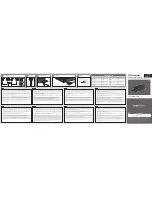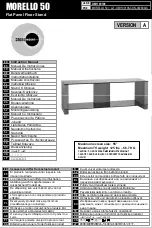
SECTION II
2.0
INTRODUCTION:
2.1
The MMC portable oxygen sensor described herein incorporates extremely accurate
instrumentation to provide measurements of oxygen percentage levels in inert gas
protected vessels containing potentially explosive products. The primary field of
application includes petroleum carrying barges and sea going tankers. Other application
areas such as land-based petroleum storage tanks can also use the extra assurance of
safety afforded by the use of this equipment.
2.2
The equipment incorporates the following novel and advantageous features:
2.2.1 Extremely low battery drain (less than 1 milli-ampere) resulting in battery life of
over 1,000 hours.
2.2.2 Automatic power turn-off in air, with turn-off disabled during measurement use in
gaseous environments containing less than 18% oxygen.
2.2.3 Oxygen cell plugs in for simple replacement. 1-year minimum lifetime.
2.2.4 Simple push button calibration with no other operator adjustment required even
when replacing oxygen cells.
WARNING!
This equipment is solely intended for use in determining the percent by volume of
the oxygen that may be present in a protective blanket of inert gas. It is not claimed,
or intended for use in closed or confined spaces, or any other condition where
human safety is of concern.
2.3
The MMC system uses a sensor suspended at the end of a fluoropolymer covered gauging
tape, wound on a reel assembly. The plastic covered steel gauging tape contains two
isolated side conductors to carry the signal and ground from the electronic circuit within
the sensor barrel to conditioning electronics in the reel hub. The surface of the tape has
been treated to make it sufficiently conductive to prevent the build-up of static charges.
Percent oxygen indication is provided by a large digital liquid crystal display (LCD)
located on reel hub assembly.
2.4
In addition to the LCD display described above, which provides accurate reading of
percent of oxygen, the MMC tape also incorporates a pulsating horn and a light emitting
diode (LED), to provide a visual and audible alarm indication of unsafe conditions,
specifically, that oxygen content is above an 8% by volume level.
3







































